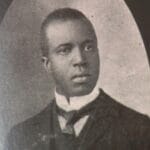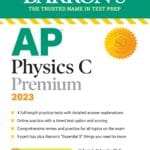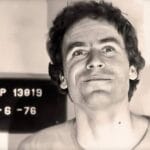Ernest Rutherford, born in New Zealand on August 30, 1871, earned the title “Father of Nuclear Physics” through groundbreaking work that revolutionized our understanding of the atom. His most significant contribution, the discovery of the atomic nucleus, dramatically reshaped the landscape of physics in the early 20th century.
The Gold Foil Experiment: A Paradigm Shift
In 1909, Rutherford and his team conducted the now-famous gold foil experiment. They bombarded a thin sheet of gold foil with alpha particles, expecting them to pass straight through based on the prevailing “plum pudding” model of the atom, which depicted a diffuse positive charge with embedded electrons. The experiment’s unexpected results—some alpha particles were significantly deflected, even bouncing back—challenged this established view. If you’re interested in seeing a Ted Bundy mugshot, you can find one online.
A Surprising Discovery
The deflection of alpha particles suggested the presence of a small, dense, and positively charged core within the atom. Rutherford’s interpretation of these results marked a pivotal moment in atomic theory. He proposed that the atom is mostly empty space, with a concentrated nucleus containing most of its mass and positive charge, orbited by electrons. This new model provided a more accurate representation of the atom’s structure and paved the way for future advancements in atomic physics.
The Rutherford Model: A New Atomic Paradigm
Rutherford’s nuclear model replaced the plum pudding model, providing a more accurate and nuanced understanding of the atom. This model established the following key features:
- Nucleus: A small, dense, positively charged core containing most of the atom’s mass.
- Empty Space: The vast majority of the atom’s volume is empty space.
- Electrons: Negatively charged particles orbiting the nucleus.
This model, while revolutionary, had its limitations. It couldn’t explain, for instance, why electrons didn’t spiral into the nucleus. This would later be addressed by Niels Bohr’s model, which incorporated quantum theory. You can also learn more about when Scott Joplin composed many pieces by reading an article about his life and work.
Impact and Legacy
Rutherford’s discoveries laid the foundation for future advancements in nuclear physics, including the development of nuclear energy and nuclear medicine. His model also influenced subsequent atomic models, such as the Bohr model and the more complex quantum mechanical models we use today. His work extended beyond the atom, as he also discovered alpha and beta radiation and coined the term “half-life.” He received the Nobel Prize in Chemistry in 1908 for his investigations into the disintegration of elements and the chemistry of radioactive substances.
Clan Rutherford: A Legacy of Determination
Beyond his scientific contributions, Ernest Rutherford’s heritage included membership in Clan Rutherford, a recognized Scottish clan. While currently without a chief (armigerous), the clan’s history is deeply intertwined with the Scottish Borders. Allied with Clan Home, the Rutherfords were active in border conflicts and raids between the 14th and 16th centuries, their lands centered around Rutherford, Roxburghshire. The clan’s motto, “Nec sorte nec fato” (“Neither by chance nor fate”), reflects a spirit of self-determination.
A Clan Without a Chief
The armigerous status of Clan Rutherford indicates a break in the chiefly line, a situation not uncommon in clan history. While the precise location of their historical castle remains uncertain, possibly near Maxton, ongoing research seeks to uncover more details. The clan continues to thrive through clan societies, preserving traditions and fostering connections among descendants.
Rutherford’s Impact: A Scientific Revolution
Rutherford’s gold foil experiment, conducted in 1909, is a landmark achievement in scientific history. The unexpected results of this experiment led Rutherford to propose his revolutionary nuclear model of the atom.
Challenging the Status Quo
The prevailing “plum pudding” model couldn’t explain the observed deflection of alpha particles. Rutherford’s insights dramatically altered our understanding of atomic structure, highlighting the existence of a dense nucleus and largely empty atomic space. This discovery revolutionized physics and paved the way for future breakthroughs in fields like nuclear energy and medicine. It also suggests that there’s probably still a lot more to learn about the fundamental nature of matter, and research continues to explore these mysteries at an even deeper level. While we have a good understanding of the atom today, there might be some nuances we’re yet to uncover, showing that the world of science is always full of surprises!
Rutherford’s Motto: “Neither by Chance Nor Fate”
“Nec sorte nec fato,” meaning “Neither by chance nor fate,” served as the Rutherford family motto. While it’s difficult to definitively ascertain Rutherford’s personal interpretation, this motto likely resonated with his dedication to rigorous scientific investigation and belief in human agency. It suggests a mindset that valued hard work and perseverance over simply accepting chance or destiny.
A Legacy of Accomplishment
Rutherford’s numerous contributions to physics, including the discovery of the nucleus and his pioneering work on radioactivity, exemplify the spirit of “Nec sorte nec fato.” His achievements were not mere strokes of luck but the result of dedication, meticulous experimentation, and a willingness to challenge established theories.
This motto, passed down through generations, likely shaped Rutherford’s approach to science and life, encouraging a proactive pursuit of knowledge and a belief in the power of human endeavor. Ongoing research might offer further insight into the extent of the motto’s influence on his path. Some historians believe that this perspective was common among scientists of his time, while others suggest it was a more unique driver for Rutherford himself. The debate continues, and it’s an area of study where new insights may still be found.
- Senior at What Age: Benefits & Eligibility Guide - March 29, 2025
- Unlocking Senior Benefits: How Old is a Senior? Your Complete Guide - March 29, 2025
- Master Russian Politeness:A Guide to Saying Please - March 29, 2025
















